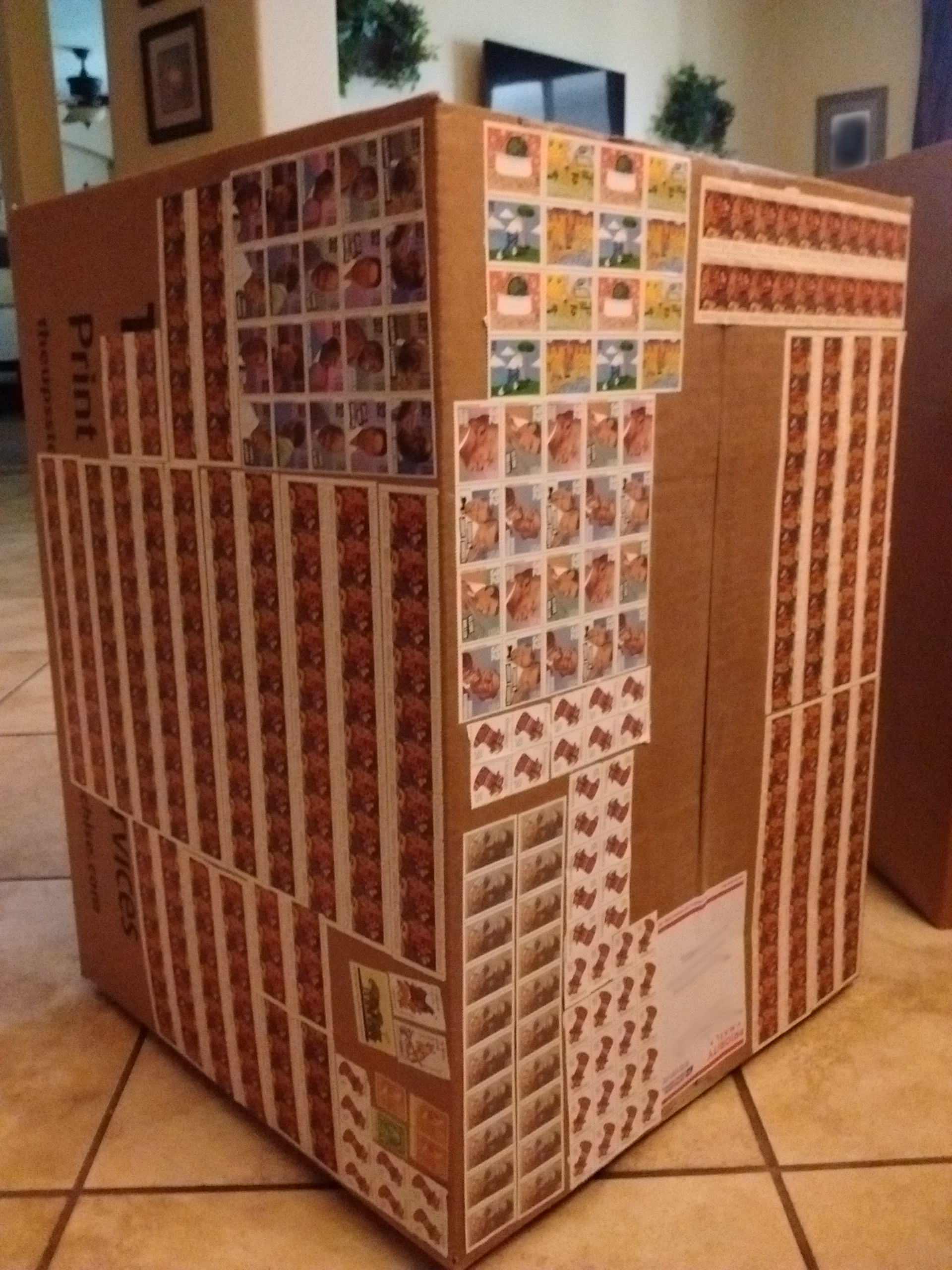Over the past several years, I have conducted a lot of online transactions. Beginning in 2016 I began selling things I came across on eBay, and I enjoyed learning the best shipping methods to minimize my expenses. Eventually, I discovered that I could purchase old, unused postage stamps in small denominations for about 30% below their face value from other sellers on eBay. To sweeten the deal even more, eBay would run semi-regular promotions like $15 off a $75 purchase to boost their sales numbers. During these promotions, I would buy these stamps, typically varying from 3 to 20 cents, for about 57% of face value. At the time, this was the cheapest shipping method available to me. I do not believe this is still the case as USPS retail rates have increased substantially. Because I was 15 and stupid, I would take the time to lick these low-value stamps and attach them to my packages, sometimes covering multiple sides of the box. To make things even more stupid, any package weighing over 13oz bearing stamps must be presented at the post office counter, meaning I had to go to the post office with these ridiculous-looking packages and wait while they canceled all the stamps. Below is a photo of the largest package I ever sent using this method.

Naturally, I eventually thought that if I could purchase genuine United States postage for less than face value, maybe I could purchase genuine United States currency for less than face value. Sure enough, a quick search revealed many auction listings for a single dollar bill with a $0.01 starting bid and free shipping. Typically, these listings are for bills that have value to collectors and end up selling for much higher than face value. However, there were also listings without significant collectible value that routinely sold for face value or lower. Some of these listings were quite clear in the description, they were sending out dollar bills for less than a dollar to game the system to get higher sales numbers and more positive feedback. In the good old days before South Dakota v. Wayfair and before the end of 1% eBay Bucks on all purchases, I could bid up to $1 on one of these auctions and have a net gain of one cent. Once I even won an auction for a dollar bill at the starting price of $0.01 for a quick $0.99 profit. More commonly, though, I would bid $1.01, which ensured that I would still win the auction if somebody else bid exactly $1. With the eBay Bucks I always came out even, and while I wasn't gaining anything I did think it was hilarious that somebody was wasting money on eBay fees, an envelope, and a stamp just to mail me a dollar. In one year, I did about fifty purchases like this for an overall profit of about 40 dollars. My personal favorite was a $500 box of half dollars I purchased for $499.75. They ended up causing problems with the coin machine at my bank, which at the time I thought was pretty funny.
Today, I get my entertainment from a more advanced scheme being used by garbage Amazon sellers to inflate sales numbers. I am aware of two websites that facilitate this, Rebaid.com and RebateKey.com. These sites typically work by providing you a link to an Amazon search page with a specific query already entered, for example sunglasses for men. Then, you must locate and purchase the advertised item. After purchase, you must enter your Amazon order number on the rebate website, and after a few weeks you receive the rebate. Unless it is something I actually want, I only do this when I stand to make money. The rebates typically do not cover shipping or sales tax, which is important to consider. I worked through this over the past month by using a credit card that offered both 5% cashback on Amazon purchases and double cashback at the end of the first year, effectively 10% cashback. Timing purchases right so that the total is over $25 gets you free shipping without paying for Prime. This meant I could purchase a bunch of these random items, get free shipping, a rebate for the entire subtotal, and the credit card cashback which more than covers the sales tax. On top of that, using AmazonSmile means Amazon is sending 1% of these purchases to my church. I plan to use some items for gifts and others will eventually make their way to Goodwill. Again, I’m not making big bucks doing this, but I do find it a bit funny.
While buying old stamps may be innocent enough, my other two schemes actively make e-commerce worse as all metrics become less reliable. I don’t know what percentage of Amazon, eBay, and the internet at large is fake, but I imagine it is a lot more than most people realize. Over this next year, I look forward to using my time for activities that are more fulfilling than figuring out how to get some cheap junk for free.